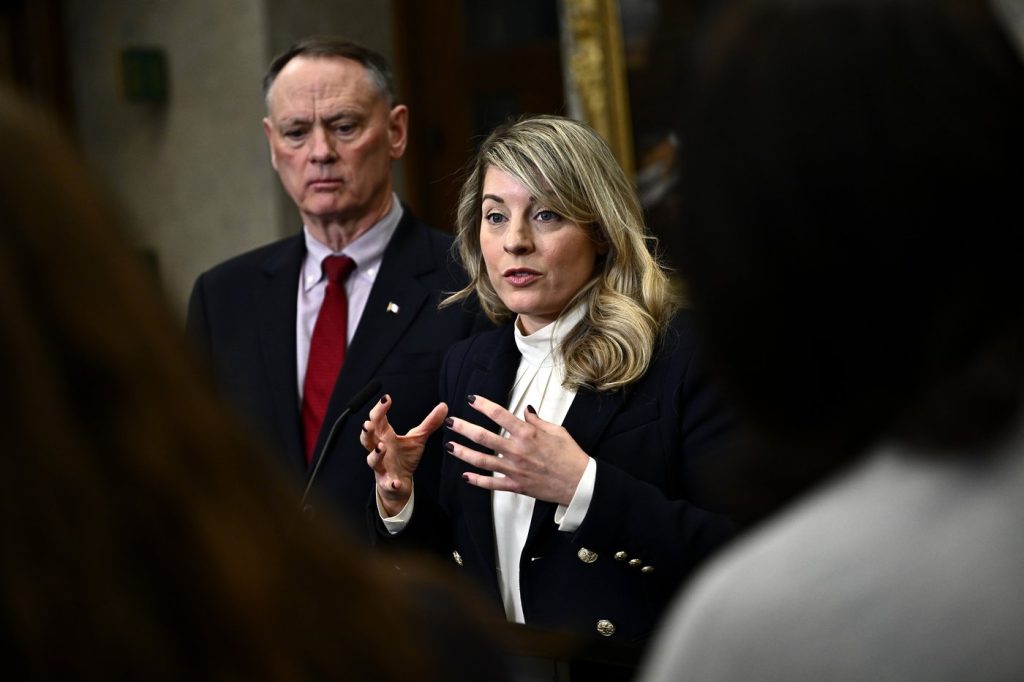In a critical diplomatic endeavor, three Canadian federal cabinet ministers traveled to Washington, D.C., to persuade U.S. President Donald Trump against implementing potentially devastating tariffs on Canadian imports. Foreign Affairs Minister Mélanie Joly, Public Safety Minister David McGuinty, and Immigration Minister Marc Miller are engaging with Republican lawmakers and Trump's team to avert the looming 25 per cent tariffs that Trump has hinted could take effect as early as Saturday. The president's initial reasoning for these tariffs centers around concerns regarding Canada’s and Mexico’s handling of illegal immigration and drug trafficking across the U.S.-Canada border.
Prime Minister Justin Trudeau has expressed that Canada will respond swiftly if the tariffs are enacted, stating that "every option is on the table" in retaliation. The Canadian government’s intention is clear: to protect its economy from the adverse effects that such tariffs could generate.
Meanwhile, New Brunswick’s Premier Susan Holt voiced concerns about "serious headwinds" the province might face should the U.S. proceed with the tariffs. In her inaugural state-of-the-province address, Holt outlined her government’s commitment to adapting across various sectors, including education, the environment, and the economy, to ensure continued growth in New Brunswick. The premier urged residents to support local businesses, which might be affected by the looming U.S. tariffs, and highlighted some priorities of her administration, such as improving primary care access and affordable housing. An accountability website has also been launched, aimed at updating New Brunswickers on the government's progress and achievements.
On the ground in Canada, businesses are bracing for the impact of potential tariffs. Jessica Miao, co-founder of Apricotton, a Toronto-based teen bra company, expressed her concerns about the threat the tariffs pose to her business as it aimed to expand into the U.S. market this year. While Trump’s tariff announcement seems imminent, the ambiguity surrounding the targeted industries leaves many Canadian businesses anxious about how to prepare. Companies like Kinaxis, an Ottawa-based software vendor, are already responding by employing their applications to streamline supply chain management in anticipation of economic and trade changes.
In another development, the Canadian post-secondary education system is facing financial strain, attributed to a significant drop in international study permits issued last year. Organizations representing these institutions have flagged this decline as a serious threat to their budgets, which may necessitate program reductions. Although the federal government aimed for a 35 per cent reduction, Canada witnessed a staggering 40 per cent decrease in the international study permits across all educational levels, with projections foreseeing an additional 10-per-cent decrease for the upcoming year.
Recently, a report from ApplyBoard indicated that the number of approved permits for college students might have dropped by approximately 60 per cent, while international undergraduate approvals fell by about 40 per cent. This decline is particularly concerning for provinces that had increased their international student permit allocations.
Lastly, Canadians can expect to see a rise in grocery prices starting this February. As the annual industry-wide price freeze, which typically coincides with the holiday season, comes to an end, grocery stores will begin to adjust prices. Historically, this blackout period helps maintain price stability during a sensitive consumer spending period. However, given the current climate of high food inflation and consumer scrutiny, major grocery chains have cited supplier price increase requests as a key factor in their pricing decisions. Inquiries to major Canadian grocery chains like Loblaw have yielded no official comments regarding the annual price freeze.
The current scenario illustrates how international trade relations and economic decisions significantly impact both Canadian citizens and businesses at multiple levels. The collective efforts by federal and provincial leaders aim to navigate these uncertain waters and ensure economic resilience in the face of external pressures.










